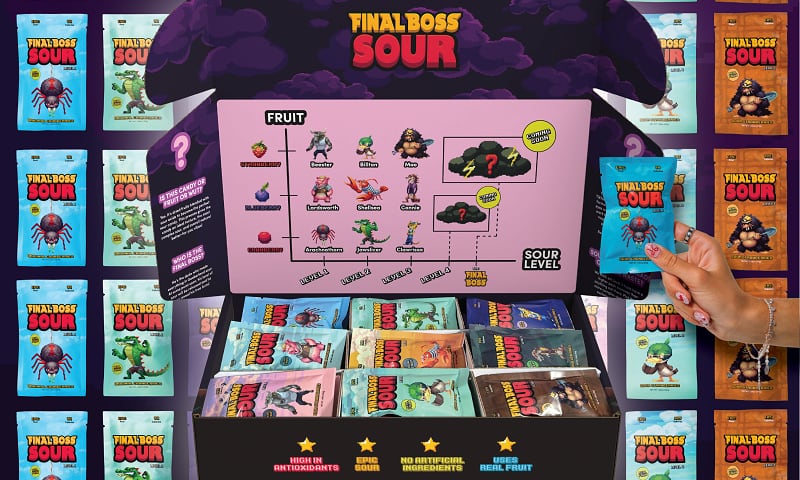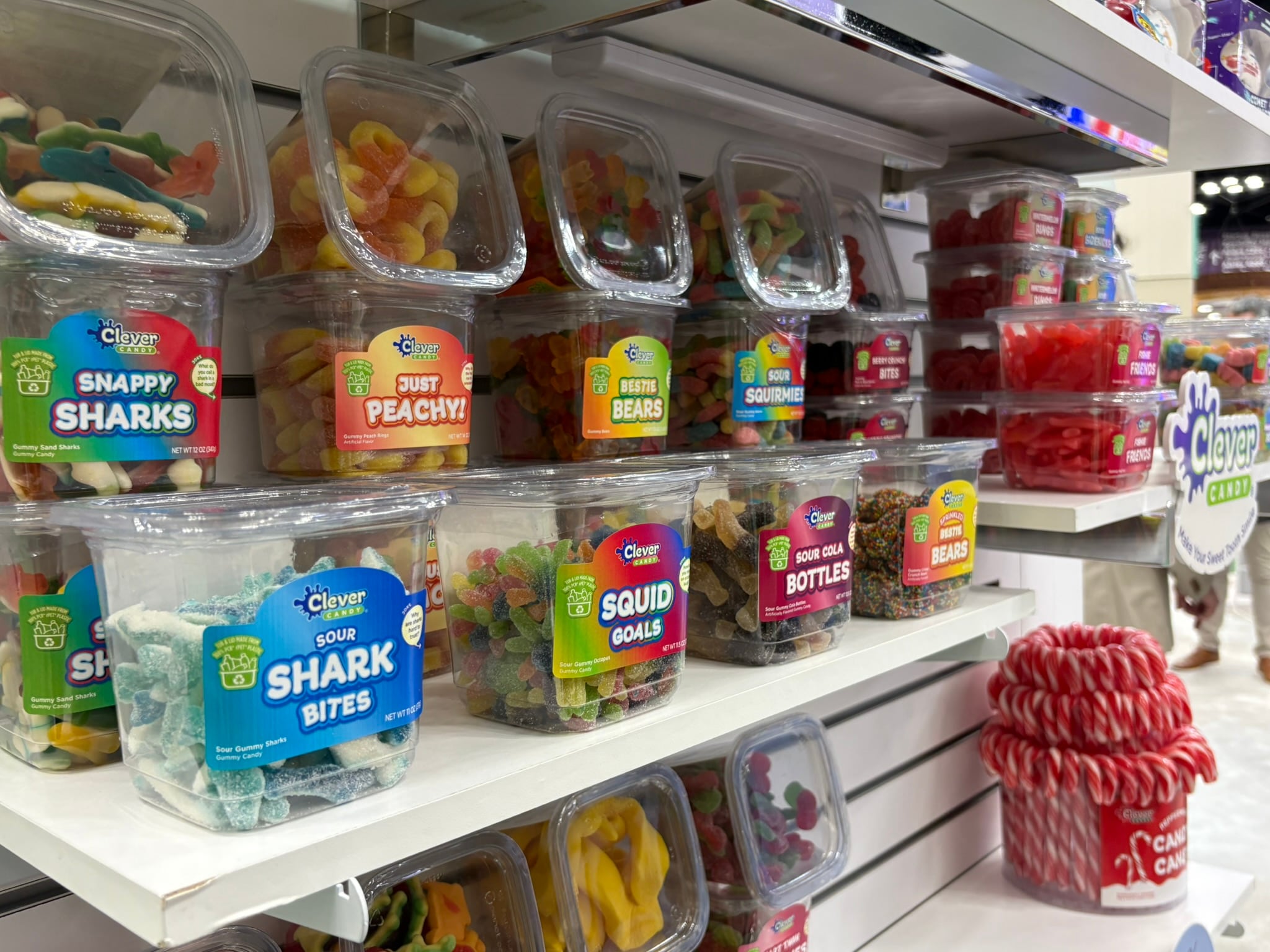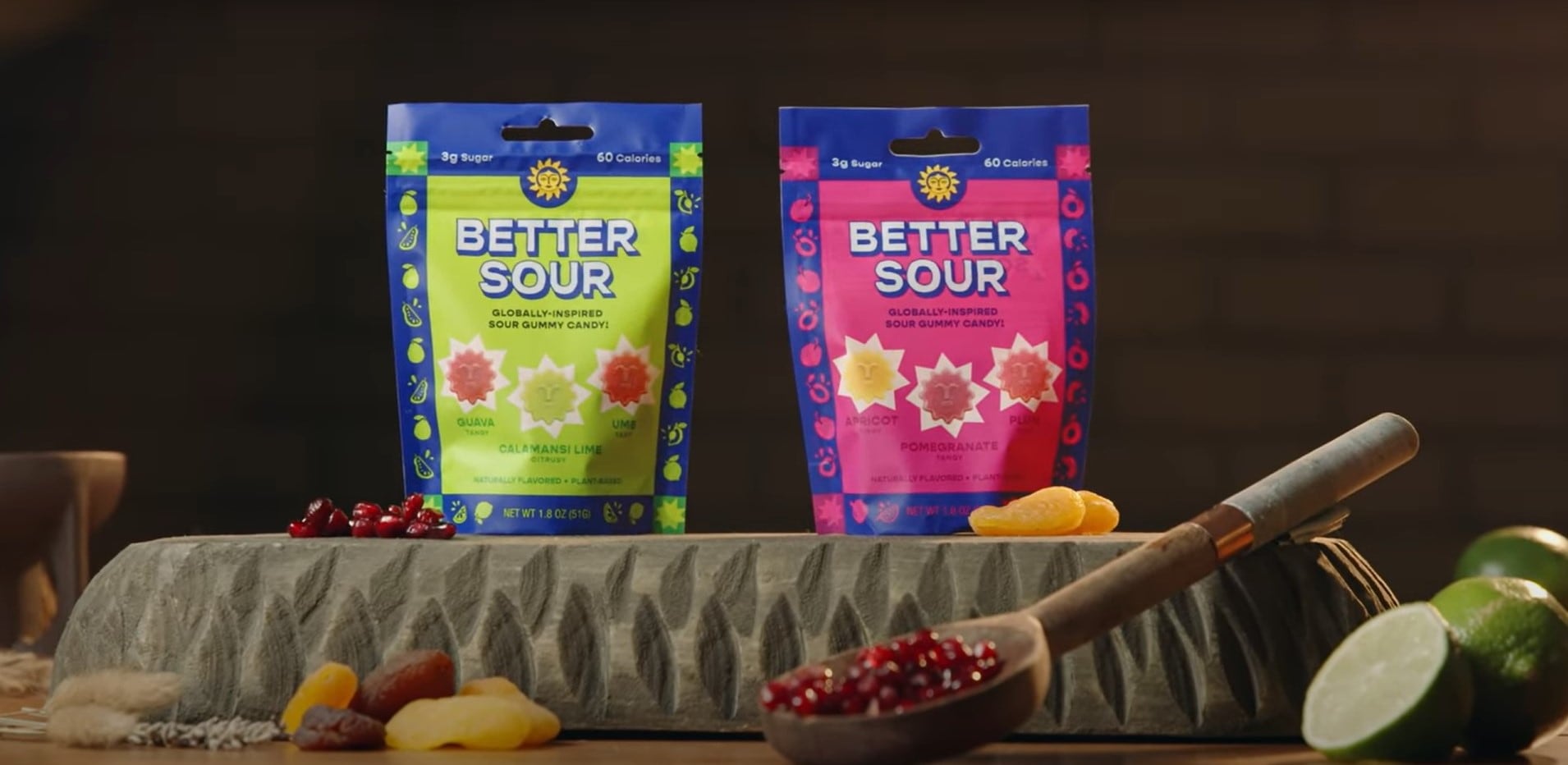Blobs’ goal is to redefine better-for-you gummies with a focus on flavor fusion, vibrant natural colors and bold, whimsical branding, according to Co-founders and Co-CEOs Mike Schanbacher and Nicholas Kheny.
Blobs emerged from a desire to do better than simply mimicking nostalgic candies by formulating with all natural ingredients, Schanbacher explained in an episode of Startup Spotlight.
The brand’s name, suggested by a friend, reflects its core ethos of playfulness and whimsy, as shown through the brand’s Dr. Seuss-inspired poems on pack.
“We are not conforming,” Schanbacher said, adding that the founders are “doing our own thing and making sure that fun is the focus.”
Blobs’ flavor strategy embraces a fusion of familiar and tropical notes. Early iterations involved dozens of trials, exploring combinations like mango-dragonfruit or guava blends before settling on the current lineup, including pomegranate-apple, pineapple-passionfruit and orange-peach. The newly launched sour varieties, include black raspberry-cherry, strawberry-yuzu and watermelon-lychee.
“We try to bring in one more familiar flavor and one kind of newer flavor,” Schanbacher noted. “We merge pineapple, which people recognize, with passion fruit. And for sour flavors, we have black raspberry cherry and strawberry yuzu — reflecting a global flavor trend.”
The gummies feature two grams of sugar per bag, sweetened with allulose, and are colored with natural dyes from turmeric, red radish and spirulina.
For comparison, Haribo gummies contain 14 grams of added sugar per 30 gram-serving and Sour Patch Kids contain 24 grams of added sugar in the same serving size.
Schanbacher emphasized the brand’s early foresight on natural colors and dyes which was a hot topic at industry events like Sweets and Snacks Expo, where brands are exploring reformulation options to replace synthetic colors.
Startup Spotlight: More advice from founders to founders
Catch-up on recent episodes of Startup Spotlight that include tips and strategies for building a CPG food and beverage business:
- Digital sampling campaigns expand startup’s reach beyond limited retail distribution: Startups with limited retail distribution can test consumer interest in potential new regions and generate viral buzz that can prime a market for launch with digital sampling campaigns that convert first-time buyers into micro-influencers.
- Why Key built its energy drink brand block by block in NYC: By starting small and local, the founders are gathering in sights on ingredient preferences, usage occasions and brand resonance – before scaling nationwide.
- How two founders saved the family dairy farm with an organic yogurt brand: Painterland Sisters taps into demand for clean label and protein-rich y ogurts, but chasing trends was never the mission of two farmers-turned-CPG founders.
- From self-reflection to investor ready: The tough questions to ask before fundraising: The founder of sauce, spice and snack brand Eat Happy Kitchen deeply feared asking for money, but by reflecting inwardly to identify the root causes of her anxiety and worse case scenarios she was able to create a business plan and pitch to overcome her concerns and those of potential investors.
Retail roots and national growth
From the beginning, Blobs targeted retail over direct-to-consumer sales, with some DTC and Amazon presence but clear priorities on brick-and-mortar growth. Schanbacher’s professional background in DTC growth marketing guided the brand to not put “all our eggs in that basket because online algorithms can change, and it becomes very difficult to chase revenue,” he said.
Starting in the Northeast – specifically New York City and Philadelphia – Blobs built strong local distribution through partners, like UNFI and KeHE, expanding its presence in key regional retailers, including Fairway and local grocers.
Beyond traditional grocery, Blobs is exploring new “lifestyle inflection points” for candy placement, such as bookstores and hotels, recognizing candy’s pervasiveness.
Funding with flexibility and focus
Blobs’ funding strategy is deliberate and cautious, Schanbacher explains.
Initially boot-strapped and relied on friends and family funds, the founders raised a couple of rounds through referrals and networks, purposefully avoiding the typical venture capital chase in the beginning.
“We’ve been very careful with money, growing as opportunities present themselves instead of chasing arbitrary targets or timelines,” he said.
Currently, Blobs is raising a seed round to bridge them to profitability and enable more scalable financing models.
“The goal is to get through the next year to year and a half, reach profitable growth, and unlock inventory funding, rather than using our own money,” Schanbacher added.
Marketing: Trial, word of mouth and in-store sampling
For Blobs, getting the product into consumers’ hands is paramount, Schanbacher said.
“People like trial – getting people to taste the candy is No. 1. We can show a million people a Facebook ad, but for that same cost, we can have many more people actually eat it,” he said.
Their marketing mix includes PR-generated product seeding, guerrilla street marketing and a major investment in in-store visibility.
“Our largest spend is in-store marketing, getting the best shelf placements and branded shippers in stores to build awareness,” he added.
Editor’s Note: A previous version of this article incorrectly stated that Blobs is available at Whole Foods Market.



